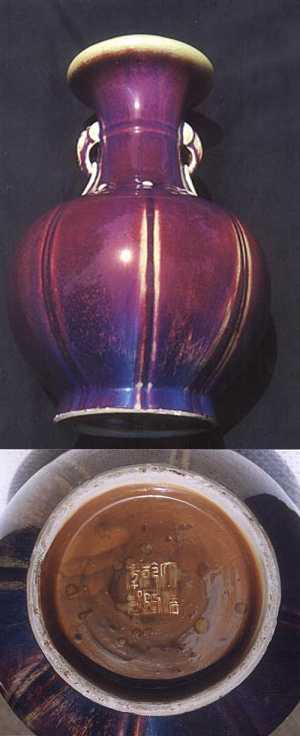
This page is only one of many thousands of Gotheborg.com Help and Information Pages, offering specialized knowledge on Chinese and Japanese Porcelain, including a Glossary, Q&A, Chinese and Japanese Porcelain Marks, Chinese Porcelain Exhibition and Excavation reports etc. For personal help and far more information, join our Discussion Board or use 'Ask a Question' for quick email consultations. For full text and better navigation, use a full-screen device rather than a mobile phone, that offers only limited content.
 First let me congratulate you on your wonderful web site on Chinese Porcelain - it has indeed been very educational. We in India tend to forget our neighbors who also have an ancient history, and with that comes a whole host of wonderful objects of art and antiques.
First let me congratulate you on your wonderful web site on Chinese Porcelain - it has indeed been very educational. We in India tend to forget our neighbors who also have an ancient history, and with that comes a whole host of wonderful objects of art and antiques.
China-Indo trading has gone on for centuries, the silk/spice route. There are a lot of good Chinese antiques available here, where unfortunately we don't really realize the value or the potential of these great objects. Some of the old English Army regiments have with them the loot from the wars, and some fine pieces are still displayed in their mess.
My father has been a collector of Chinese porcelain since 1930 - and I am now going over the items he has. Most of these were purchased after the death of a Col Degray - who was ADC to the commander of the English forces in China.
I enclose some photos of a Qing vase - 15.5 height (in), the markings at the back are from the Qianlong (1736-95) - This vase is in excellent condition, with wonderful glaze - and I am told was called the Ox's blood, or Sang du Bouef - depicting its red color. What is unusual is the two Elephants heads which are on either side.
I would like your comments about this piece, as to its rarity, as the experts I have shown this to locally, tell me that this is a unique piece -- ?
I would also like a approx valuation as per the best of your judgement. I will let you have details of the other collections, such as unique Celadon pieces later once I have photographed them all.
It is possibly that the correct name for the glaze of this vase would rather be "transmutation glaze" than "Ox Blood". It is also a possibility that the inspiration for this vase, especially while looking at the brown dressing on the base and the slightly bluish tint, have rather been a "Jun" piece than an "Ox Blood". The Jun glazes are typically light blue with a copper red splash. This vase could then be regarded "rare" in the sense of having turned more or less entirely red.
During the Kangxi period of the Qing dynasty the art of making "blood-red" glaze was revived, another name being Sang de Boeuf meaning "ox blood " glaze.
By this time it was known to have been used earlier, but the secret of making it had been "lost" during the Jiajing reign (1522-1566) of the Ming Dynasty. The reason said to be that the supply of raw material had ran out. Since the color actually derives from small amounts of copper in the glaze, that could not possibly have been the case.
The glaze during this time ran down the sides of the vase, stopping short of the foot. The perfect control achieved by the Kangxi potters is usually lacking in vases of later periods, where the glaze typically run over the foot and have to be ground or chipped off.
To me the way the red glaze have accumulated at the base indicates a "later" date to this vase, as does the shape and I would say also the bluish tone.
The Qianlong mark is nice but not of Imperial quality, and unfortunately not of the period. As a collector's advise I would suggest that this vase in my opinion is from the latter part of the 19th century even if it not possibly for me to be absolutely certain.
The vase is still valuably but not the absurd amount of money it would have, had it been an Imperial Qianlong piece.
I am looking forward to see more of your pieces if and when you find the time to send pictures of them.
Thank you for your interest.
Best regards,
Jan-Erik Nilsson